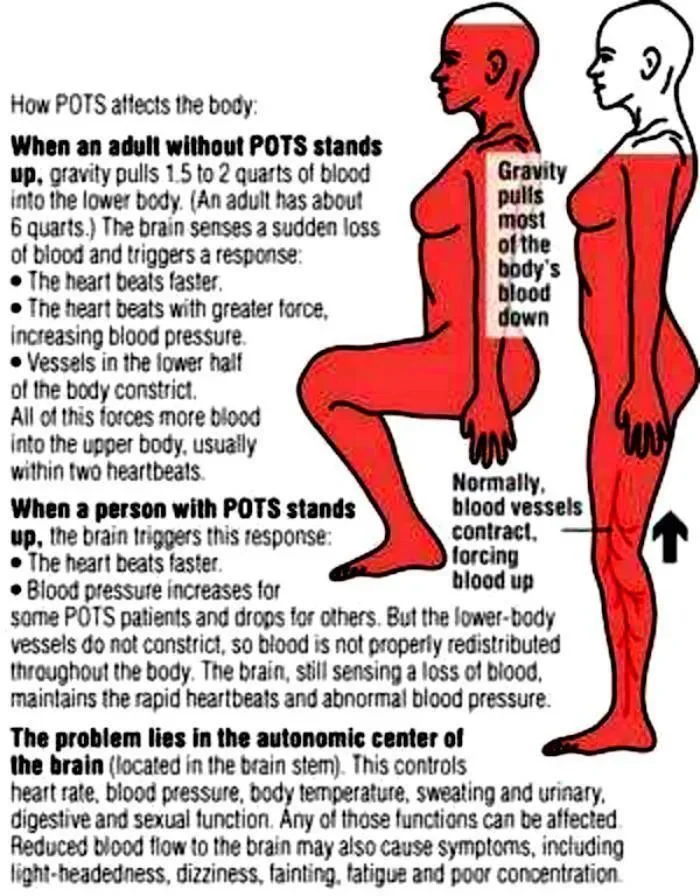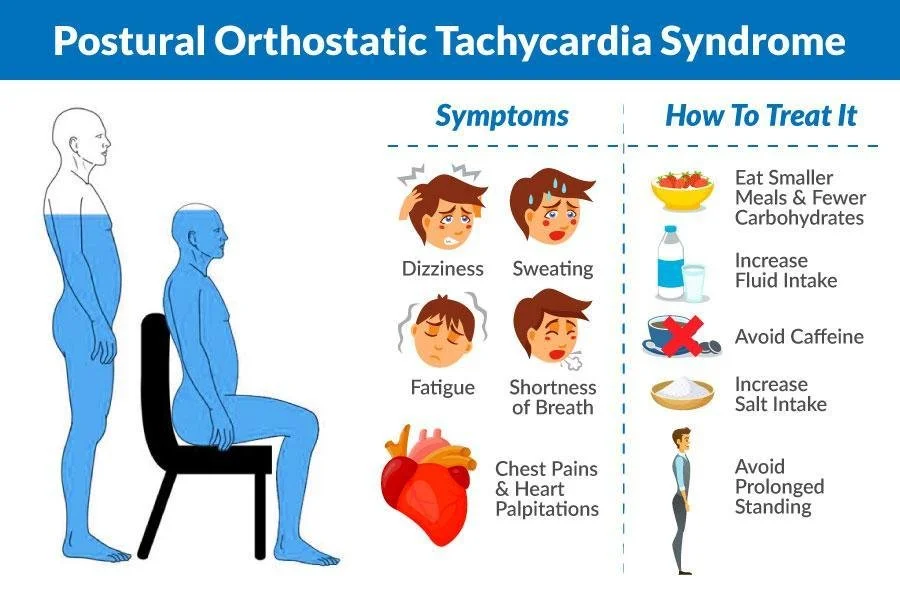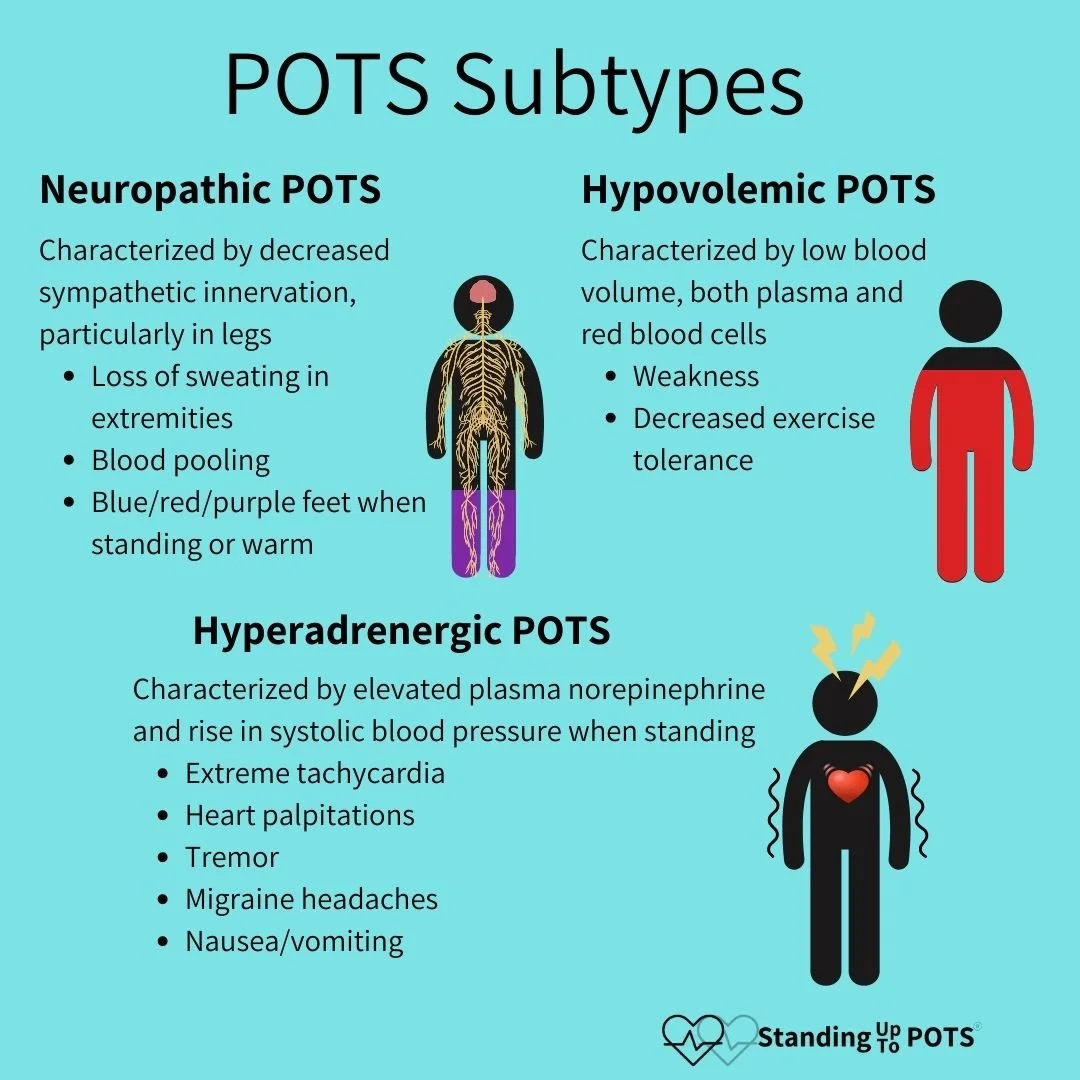Postural Orthostatic Tachycardia (POTS)
What is Postural Orthostatic Tachycardia (POTS)?
Postural Orthostatic Tachycardia Syndrome (POTS) is a condition that affects the autonomic nervous system, leading to a range of symptoms primarily related to an abnormal increase in heart rate upon standing. Common symptoms include significant heart palpitations, dizziness, and lightheadedness, particularly when transitioning from a sitting or lying position to standing. Individuals may also experience fatigue, weakness, nausea, and fainting spells. Other manifestations can include temperature dysregulation, sleep disturbances, and cognitive difficulties, often referred to as "brain fog." These symptoms can vary in intensity and may significantly impact daily functioning and quality of life. Proper diagnosis and management are essential for individuals experiencing these challenges.
Misdiagnosis of POTS
Due to its diverse presentation, POTS is often misdiagnosed as anxiety, depression, panic disorder, or Attention Deficit Disorder (ADD). For instance, patients may experience elevated heart rates and feelings of panic when standing, leading healthcare providers to attribute these signs to anxiety or panic disorders. Similarly, cognitive difficulties associated with POTS can resemble those seen in ADD, complicating accurate diagnoses. Recognizing POTS requires a careful evaluation of physical symptoms in conjunction with psychological assessments, highlighting the importance of comprehensive medical evaluation for those displaying such symptoms. The condition can vary in severity and may arise from various underlying causes, including autoimmune disorders, neurological conditions, or prolonged physical or emotional stress. Treatment typically focuses on managing symptoms and improving quality of life.
What is the criteria for POTS?
(POTS) is defined by a heart rate rise of 30 beats/min or more within 10 minutes of standing or head-up tilt, in the absence of orthostatic hypotension. In children, the threshold increase in heart rate is 40 beats per minute. The standing heart rate may exceed 120 beats/min or higher.
What is the impact of POTS?
The chronic nature of POTS can also take a toll on mental health. The unpredictability of symptoms and the limitations imposed by the condition can lead to feelings of anxiety, depression, and a sense of loss regarding one's former lifestyle. Patients may struggle with social isolation as they navigate a world that often doesn't accommodate their needs. Increased awareness and education about POTS within the medical community are crucial to improving diagnosis and treatment, fostering a supportive environment that recognizes the legitimacy of patients’ experiences and promotes their overall well-being.
Medical community response to POTS
Despite its prevalence, the medical community often remains under-informed about POTS, leading to frequent misdiagnoses or dismissive attitudes towards patients’ experiences. Many individuals face a long and arduous journey to receive proper care, often visiting multiple healthcare providers before obtaining a diagnosis. This lack of understanding can leave patients feeling frustrated, isolated, and invalidated, as their symptoms are frequently misunderstood or minimized.
Treatment of POTS is typically led by a cardiologist and involves a multifaceted approach aimed at alleviating symptoms and enhancing quality of life.
Increased fluid and salt intake to expand blood volume
Implementing a regular gentle exercise regimen if possible to improve cardiovascular fitness. Incorporating gentle forms of exercise, such as swimming or recumbent biking, allows for cardiovascular conditioning while minimizing stress on the autonomic nervous system. Pilates is also great for people with POTS as you are mostly horizontal thus minimizing stress and potential flaring of symptoms.
Compression garments, such as abdominal binders and stockings, may help to prevent blood pooling in the lower extremities.
Pharmacological interventions can also be effective, with medications tailored to individual symptoms and responses. Commonly prescribed options include beta-blockers, fludrocortisone, and midodrine, all of which help to regulate heart rate and blood pressure.
Pacing is an effective treatment strategy for managing Postural Orthostatic Tachycardia Syndrome (POTS) as it helps individuals balance activity and rest to minimize symptoms. POTS often involves an abnormal increase in heart rate upon standing, which can lead to fatigue, dizziness, and other debilitating symptoms. By implementing pacing techniques, patients can gradually increase their tolerance to activity and better manage their energy levels. One key aspect of pacing involves recognizing personal limits and developing a structured daily routine that incorporates periods of activity interspersed with rest. This approach prevents overexertion, which can exacerbate symptoms. By identifying the amount of physical and mental exertion one can handle without triggering symptoms, individuals can establish a more sustainable lifestyle.In addition, pacing can include monitoring symptoms and adjusting activities based on real-time feedback from the body. This self-awareness enhances the ability to manage situations that may provoke symptoms, such as prolonged standing or sudden changes in position. Keeping a symptom diary can be beneficial, allowing individuals to track their activity levels alongside symptom severity, helping to make informed decisions about pacing. Furthermore, pacing is not solely applicable to physical activity; it also extends to cognitive demands. Pacing mental tasks through breaks can help minimize cognitive fatigue, which is another component that people with POTS may experience.
Exercise Finally, incorporating gentle forms of exercise, such as swimming or recumbent biking, allows for cardiovascular conditioning while minimizing stress on the autonomic nervous system. Together, these pacing strategies empower individuals with POTS to regain control over their daily activities and improve their overall quality of life.
Continuous monitoring and adjustments to the treatment plan are essential, as POTS can vary widely between individuals. A comprehensive, personalized management approach can significantly improve the daily functioning and overall well-being of those living with POTS.




